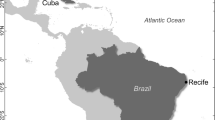Abstract
The flagellae of the unicellular marine algae Dunaliella bioculata and the freshwater Chlamydomonas resemble very much the cilia lining the bronchial tubes in human lungs. Lindane the commercial product containing 99% of the γ isomer of hexachlorocyclohexane was tested at various concentrations on the two algae.
The concentrations of Lindane tested (5ppm - 30ppm) proved to be cytotoxic and also had a remarkable effect on the motility of both Dunaliella bioculata and Chlamydomonas. The ϕ, δ and δ isomers of lindane showed similar efects on Dunaliella bioculata.
Cytoxicity was measured by growth curves and motility was quantified by microcinematography and Doppler laser velocimetry methods.
At low concentrations of all the isomers (5-10 ppm), there was an acceleration of movement which lasted for 5 minutes followed by rapid deceleration of movement.
Dunaliella was tested with the ionophore (mobile ion carrier) A23187 for calcium at concentration of (10-5M). The results were compared with that of Dunaliella with lindane at 15ppm and a combination of lindane (15ppm) and Ionophore A23187 (10-5M).
The results show that the ionophore A23187 (10-5M) enhances the effect of lindane on the motility of Dunaliella. This could suggest that lindane induced effects may be due to interferences with the intracellular calcium flux.
Similar content being viewed by others
References
Boon J.P. and Nossal R.: 1974, Inelastic light scattering by large structural particles, Biophysics Journal 4:865–880.
Izard C.: 1967 Sur la multiplication du Dunaliella bioculata en prescense de phase gazeuse de fumée de cigarene ei sur l'obiennon de mutations en prescense d'acroletne, C.R. Acad Sci. Paris, 265, 1799.
Jones O.T., Froud R.J. and Lee A.G.: 1985, Interactions of hexachlorocyclohexane mhibition with the(Ca2+, Mg2+)Atpase from sarcoplasmic reticulum, Biochim. Biophys. Act, 812,740–751.
Marano F., Krishnaswamy S. Betrencourt C., Schoevaert D., Provost J.M., and Volochine B.: 1988, Control of ciliary beat by calcium: the effects of lindane a potent insecticide, Biol. Cell., 63,143–152.
Schoevaert D., Krishnaswamy S., Couturier M. and Marano F.: 1988, Ciliary beat and cell motility of Dunaliella: computer analysis of high speed microcinematography, Biol. Cell., 62,229–240
Walker M.F. and Satir P.: 1978, Calcium control of ciliary arrest in mussel gill cells J. Cell Biol, 79, 110–120.
Author information
Authors and Affiliations
Rights and permissions
About this article
Cite this article
Krishnaswamy - Chang, S. Biflagellated Unicellular Algae as Detectors of Pesticide Contamination in Water. Environ Monit Assess 44, 487–502 (1997). https://doi.org/10.1023/A:1005730117508
Issue Date:
DOI: https://doi.org/10.1023/A:1005730117508




